Anand Srivastava
Towards 6G-V2X: Hybrid RF-VLC for Vehicular Networks
Aug 12, 2022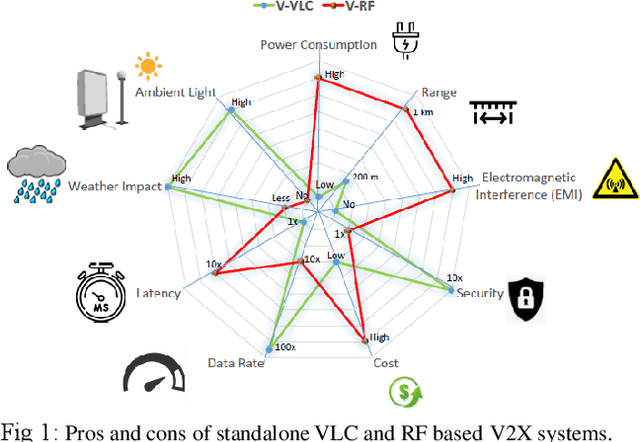
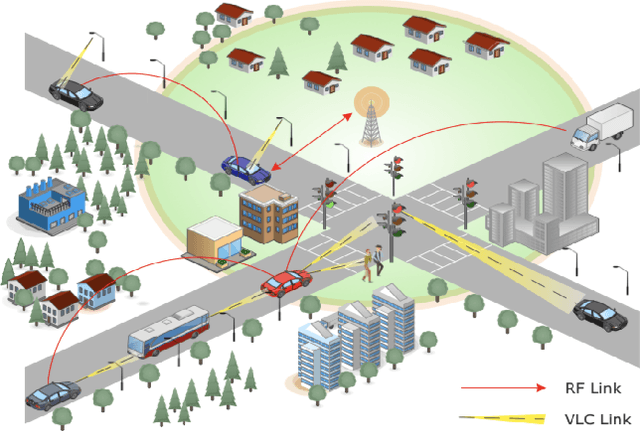
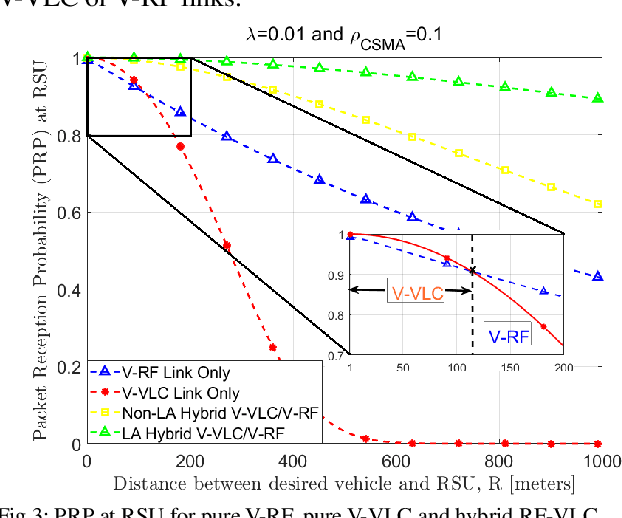
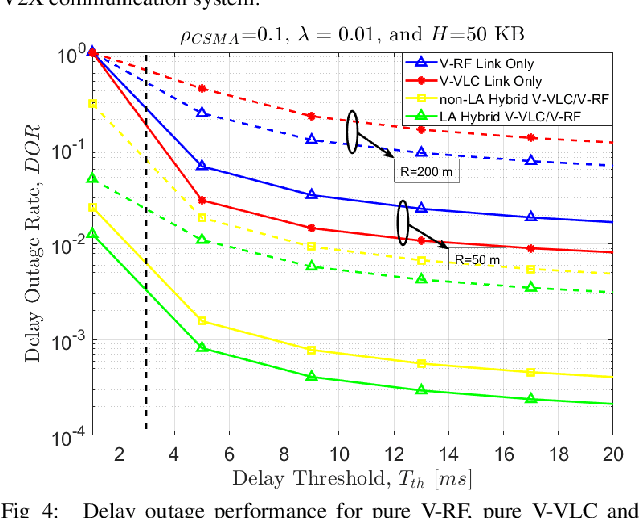
Abstract:With the advent of connected autonomous vehicles, we are expecting to witness a new era of unprecedented user experiences, improved road safety, a wide range of compelling transportation applications, etc. A large number of disruptive communication technologies are emerging for the sixth generation (6G) wireless network aiming to support advanced use cases for intelligent transportation systems (ITS). An example of such a disruptive technology is constituted by hybrid Visible Light Communication (VLC) and Radio Frequency (RF) systems, which can play a major role in advanced ITS. Hence we outline the potential benefits of hybrid vehicular-VLC (V-VLC) and vehicular-RF (V-RF) communication systems over standalone V-VLC and standalone V-RF systems. In particular, we show that the link-aggregated hybrid V-VLC/V-RF system is capable of meeting stringent ultra high reliability (~99.999%) and ultra-low latency (<3 ms) specifications, making it a promising candidate for 6G ITS. To stimulate future research in the hybrid RF-VLC V2X area, we also highlight the potential challenges and research directions.
Cache Enabled UAV HetNets Access xHaul Coverage Analysis and Optimal Resource Partitioning
Jul 14, 2022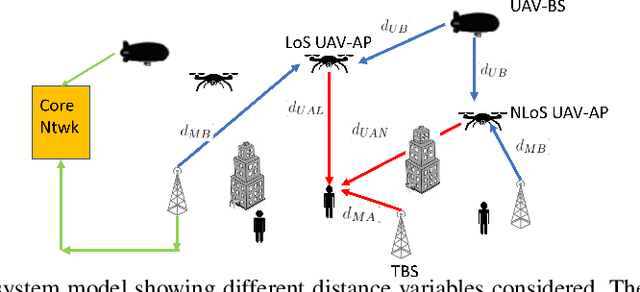
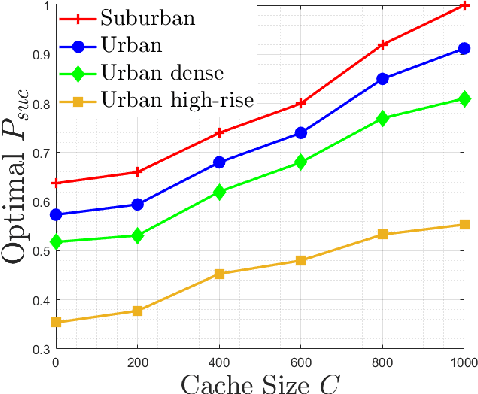
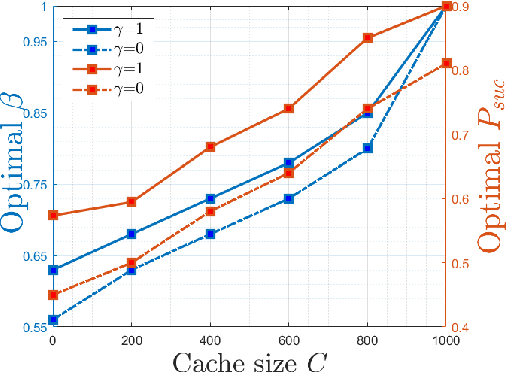
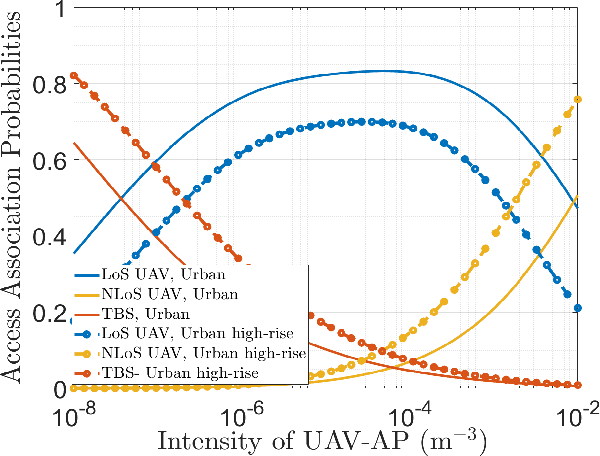
Abstract:We study an urban wireless network in which cache-enabled UAV-Access points (UAV-APs) and UAV-Base stations (UAV-BSs) are deployed to provide higher throughput and ad-hoc coverage to users on the ground. The cache-enabled UAV-APs route the user data to the core network via either terrestrial base stations (TBSs) or backhaul-enabled UAV-BSs through an xHaul link. First, we derive the association probabilities in the access and xHaul links. Interestingly, we show that to maximize the line-of-sight (LoS) unmanned aerial vehicle (UAV) association, densifying the UAV deployment may not be beneficial after a threshold. Then, we obtain the signal to interference noise ratio (SINR) coverage probability of the typical user in the access link and the tagged UAV-AP in the xHaul link, respectively. The SINR coverage analysis is employed to characterize the successful content delivery probability by jointly considering the probability of successful access and xHaul transmissions and successful cache-hit probability. We numerically optimize the distribution of frequency resources between the access and the xHaul links to maximize the successful content delivery to the users. For a given storage capacity at the UAVs, our study prescribes the network operator optimal bandwidth partitioning factors and dimensioning rules concerning the deployment of the UAV-APs.
A Tutorial on Decoding Techniques of Sparse Code Multiple Access
May 16, 2022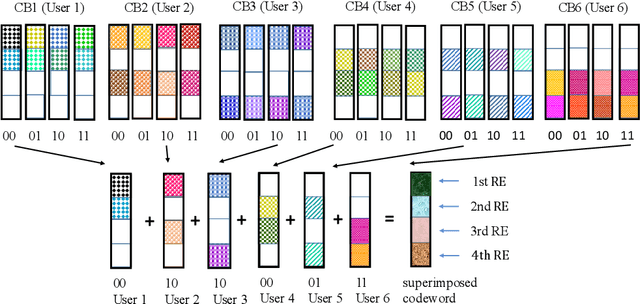

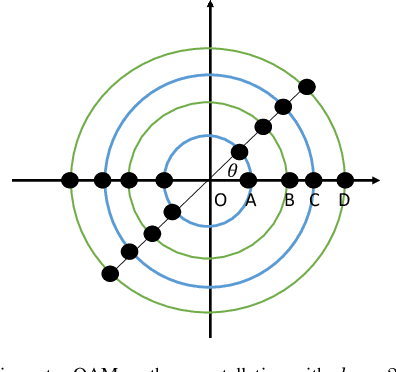
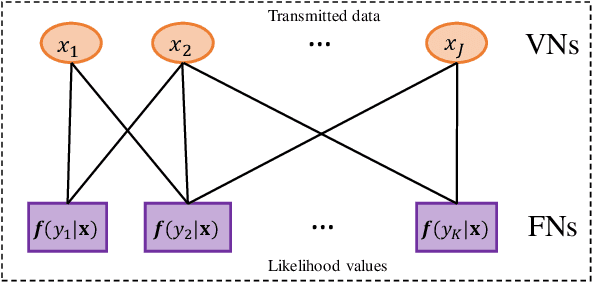
Abstract:Sparse Code Multiple Access (SCMA) is a disruptive code-domain non-orthogonal multiple access (NOMA) scheme to enable \color{black}future massive machine-type communication networks. As an evolved variant of code division multiple access (CDMA), multiple users in SCMA are separated by assigning distinctive sparse codebooks (CBs). Efficient multiuser detection is carried out at the receiver by employing the message passing algorithm (MPA) that exploits the sparsity of CBs to achieve error performance approaching to that of the maximum likelihood receiver. In spite of numerous research efforts in recent years, a comprehensive one-stop tutorial of SCMA covering the background, the basic principles, and new advances, is still missing, to the best of our knowledge. To fill this gap and to stimulate more forthcoming research, we provide a holistic introduction to the principles of SCMA encoding, CB design, and MPA based decoding in a self-contained manner. As an ambitious paper aiming to push the limits of SCMA, we present a survey of advanced decoding techniques with brief algorithmic descriptions as well as several promising directions.
Low-Complexity Codebook Design for SCMA based Visible Light Communication
Jan 09, 2022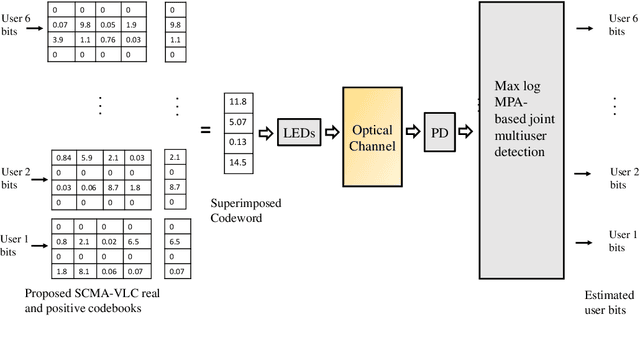
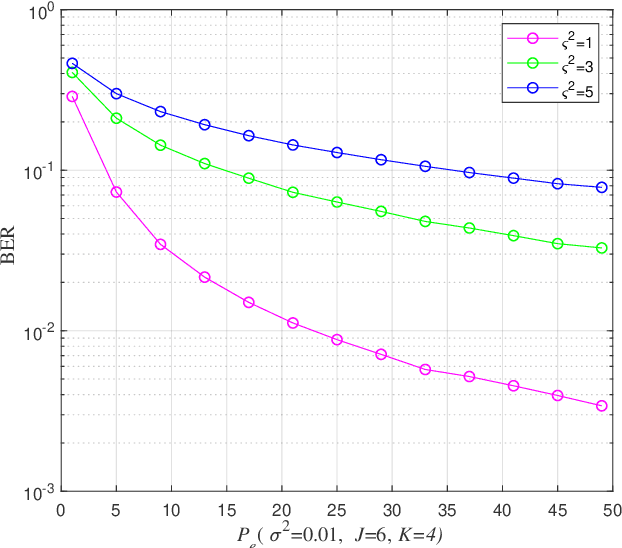
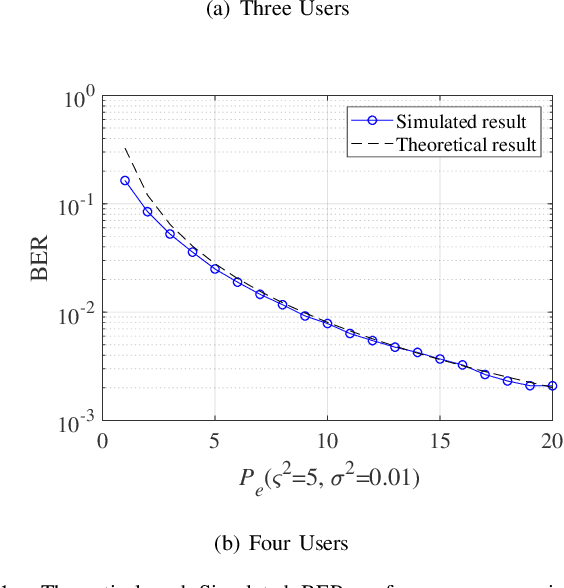
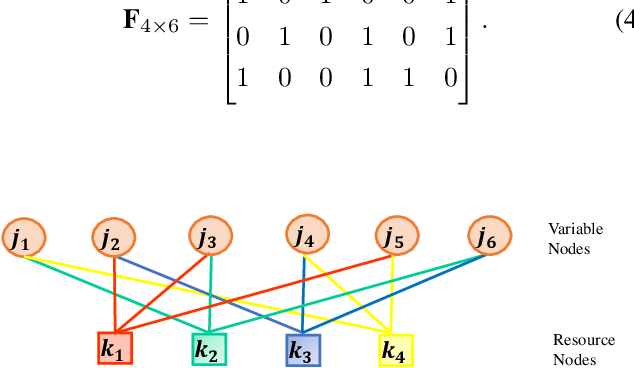
Abstract:Sparse code multiple access (SCMA), as a code-domain non-orthogonal multiple access (NOMA) scheme, has received considerable research attention for enabling massive connectivity in future wireless communication systems. In this paper, we present a novel codebook (CB) design for SCMA based visible light communication (VLC) system, which suffers from shot noise. In particular, we introduce an iterative algorithm for designing and optimizing CB by considering the impact of shot noise at the VLC receiver. Based on the proposed CB, we derive and analyze the theoretical bit error rate (BER) expression for the resultant SCMA-VLC system. The simulation results show that our proposed CBs outperform CBs in the existing literature for different loading factors with much less complexity. Further, the derived analytical BER expression well aligns with simulated results, especially in high signal power regions.
A Tutorial to Sparse Code Multiple Access
May 14, 2021



Abstract:Sparse Code Multiple Access (SCMA) is an enabling code-domain non-orthogonal multiple access (NOMA)scheme for massive connectivity and ultra low-latency in future machine-type communication networks. As an evolved variant of code division multiple access (CDMA), multiple users in SCMA are separated by assigning distinctive codebooks which display certain sparsity. At an SCMA receiver, efficient multiuser detection is carried out by employing the message passing algorithm (MPA) which exploits the sparsity of codebooks to achieve error rate performance approaching to that of the maximum likelihood receiver. Despite numerous research efforts on SCMA in recent years, a comprehensive and in-depth tutorial to SCMA is missing, to the best of our knowledge. To fill this gap and to stimulate more forthcoming research, we introduce the principles of SCMA encoding, codebook design, and MPA based decoding in a self-contained manner for layman researchers and engineers.
Early Prediction of Acute Kidney Injury in Critical Care Setting Using Clinical Notes
Nov 09, 2018


Abstract:Acute kidney injury (AKI) in critically ill patients is associated with significant morbidity and mortality. Development of novel methods to identify patients with AKI earlier will allow for testing of novel strategies to prevent or reduce the complications of AKI. We developed data-driven prediction models to estimate the risk of new AKI onset. We generated models from clinical notes within the first 24 hours following intensive care unit (ICU) admission extracted from Medical Information Mart for Intensive Care III (MIMIC-III). From the clinical notes, we generated clinically meaningful word and concept representations and embeddings, respectively. Five supervised learning classifiers and knowledge-guided deep learning architecture were used to construct prediction models. The best configuration yielded a competitive AUC of 0.779. Our work suggests that natural language processing of clinical notes can be applied to assist clinicians in identifying the risk of incident AKI onset in critically ill patients upon admission to the ICU.
 Add to Chrome
Add to Chrome Add to Firefox
Add to Firefox Add to Edge
Add to Edge